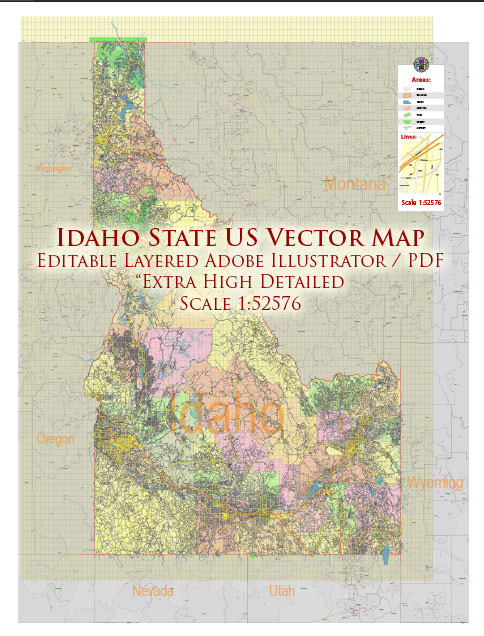Idaho is a state located in the northwestern United States. Its socio-economic characteristics can vary significantly across different regions and communities within the state. Here is a general overview of Idaho’s socio-economic description:
- Population: Idaho had a population of approximately 1.8 million people in 2020. The population has been steadily growing in recent years, driven in part by an influx of people from other states seeking a lower cost of living and outdoor recreational opportunities.
- Economy: Idaho’s economy is diverse, but it is primarily characterized by agriculture, manufacturing, technology, and services.
- Agriculture: Agriculture is a significant contributor to the state’s economy. Idaho is known for producing a variety of crops, with potatoes being a major product. Other important agricultural products include wheat, barley, sugar beets, and dairy.
- Manufacturing: Manufacturing is another important sector, with food processing, electronics, and machinery manufacturing being prominent industries.
- Technology: Boise, the state capital, has been experiencing a growing technology sector, with companies like Micron Technology, HP Inc., and many startups operating in the region.
- Services: The service sector, which includes healthcare, education, and tourism, is a substantial part of Idaho’s economy.
- Income: Idaho’s per capita income is generally lower than the national average, but the cost of living is also relatively lower, making it an attractive place for those seeking a more affordable lifestyle.
- Unemployment: Unemployment rates in Idaho have historically been below the national average. The state’s economy has generally been stable, but it can be impacted by national economic trends.
- Education: Idaho’s educational system varies, with urban areas often having more educational resources than rural areas. The state is home to several universities and colleges, including Boise State University and the University of Idaho.
- Poverty: While the overall poverty rate in Idaho is relatively low compared to the national average, there are pockets of poverty, particularly in rural areas.
- Healthcare: Access to healthcare can be a concern in rural parts of Idaho. Boise and other major cities have more comprehensive healthcare facilities.
- Tourism: Idaho’s natural beauty and outdoor recreational opportunities, including national parks, mountains, and rivers, make it a popular destination for tourists, contributing to the state’s economy.
- Culture and Lifestyle: Idaho is known for its outdoor recreational activities, including hiking, skiing, and fishing. The state offers a relatively relaxed and rural lifestyle in many areas, but urban centers like Boise provide a more cosmopolitan environment.
- Diversity: Idaho’s population is predominantly white, but it has a growing Hispanic population, especially in certain communities. Native American reservations are also present in the state.


 Author: Kirill Shrayber, Ph.D.
Author: Kirill Shrayber, Ph.D.